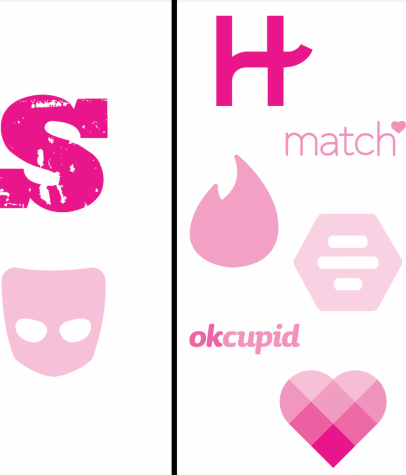Review || Film: Ivory Tower and its Failed Call to Action
This 2014 Sundance darling focuses a critical lens on higher education in America as a time when the institution is reaching its breaking point and student debt soars above one trillion dollars. The documentary by esteemed director Andrew Rossi begins innocuously enough, as an old-fashioned song beckons to us to “come down from your ivory tower” over panning shots of Columbia University’s peaceful campus filled with diffused light.
But quickly this introduction moves away from idealism: a cynical voiceover by Columbia professor of American studies Andrew Delbanco, spliced with newscasters listing off the growing anxieties over the value and cost of a college education, serve as the chorus to a suddenly distorted musical score of harsh synths as we watch unsuspecting students celebrate at graduation ceremonies. Delbanco gives us a grim sense of the road ahead for these graduates, as well as the idea that they’ve escaped the system just in time. The co-founder of PayPal, Peter Thiel, tells us “The very institution of higher learning is about to be broken and only a very few number of those institutions are going to survive the tidal wave.”
Once the alarmist introduction dissipates, the documentary takes on a balanced approach at tackling the mammoth topic of the college crisis today. The film begins this task by examining the source of “DNA” for all colleges: Harvard University. Various educators lay out the structure Harvard set as the gold standard: four-year, liberal arts-based, residential schools with selective admissions, groundbreaking research, and an endowment to sustain expansion. With it’s founding, Harvard catalyzed a race that schools are still playing in as they compete for prestige.
The overall institution of higher education has veered towards an industry as colleges become large businesses. Schools play the game as they compete to sell the best product. And the stakes in this game are billions of dollars taken from students’ pockets.
Transferring from Ivy League examples to statistics, the film details how the cost of college has increased 1120 percent since 1980 – more than any other industry in America (including food and health care). State schools, which rely more and more on heftier out-of-state tuition, cater to out-of-state students looking for social perks and “party pathways” when choosing their college. As studiousness declines, graduation rates plummet: 68 percent of public university students do not graduate in four years, while 44 percent do not graduate in six.
Ivory Tower (aptly named as it focuses on the privileged world of academia) looks at the most prestigious private institutions, state schools, and several special cases of higher learning. Two of these special cases are tuition-free schools: Deep Springs, a 2-year college committed to self-governance, academics, and labor; and Cooper Union, a school that focuses on architecture, fine arts and engineering. However, during filming, Cooper Union’s administration relegated that right to a privilege when it chose to charge students for the first time. The documentary captures the ensuing chaos of student protests that led to a two-month sit-in of the president’s office. While this event is seen as a marker for higher education’s issues reaching a crisis, the events at Cooper Union go on to become a loose frame for the remaining hour of the film. While an engaging story, it offers scant opportunity for viewers to relate, as most cannot pick the path of a free education to begin with.
In fact, the scope of the documentary as a whole fails to incorporate many key factors in its overview of higher education, ignoring the position of thousands of schools. In particular, private schools that don’t sit at the top of the ranked lists of America’s “most prestigious schools,” such as American University, are all but ignored; nevertheless, their attempts to compete with the Ivy League leaves them burdening their students with rising debt. Community colleges are all but ignored until alternate modes of educating oneself come into play.
The film spends a large chunk of screen-time focusing on alternatives to traditional education, rather than solutions to the rising cost of a four-year experience. Aside from tuition-free schools, Rossi examines the Thiel scholarship which pays students to drop out of college and go to work in the tech industry and the free Education Hackerhouse in Silicon Valley that offers skills over credentials to residents. But these opportunities are meant for a small handful of driven individuals likely to succeed regardless of their path, and their stories do little to connect with students already attending university. Then the film proposes a potential solution for many: massive open online courses.
These online courses, called MOOCs, offer the most accessible alternative to traditional college and its costs, but experiments in the UC system proved the courses to be a flop for those who required professor engagement. Harvard and MIT offered their own online course (as an AU student, I could learn to code from a Harvard professor for free!) but the film does not inform on how this experiment panned out for its 100,000 participants. Instead, it focuses on how well Harvard’s system – the very system that encouraged costly intercollegiate competition in the first place – works at engaging its students in the classroom.
Educators in the film have already predicated that Harvard will remain standing after an eventual collapse of the system, so while lauding Harvard does offer support for those in favor of the four-year system, it does not answer to how less prestigious four-year schools like AU should proceed forward to prevent collapse. As a viewer, I was angry and confused as to why Rossi painted Harvard as a success story without proving that it had found even one solution to the problems it helped create.
The film comes to a close with some optimism from individual students who achieved and grew throughout their college processes. But the film’s attempt to focus on its humanizing aspects as it wraps up cannot paint over the grim reality we’ve been given. The future of higher education appears daunting.
As an exposé, the film is gripping and powerful. But as a call to action, it does little to offer worthwhile solutions to the crisis at hand. The takeaway appears to be that schools need to stop building in their efforts to outbid one another, and that institutions need to approach cost-effective methods of ensuring quality education, particularly through creative use of technology. But is this enough?
No. But as one commentator in the movie declares, “there is no silver bullet.” Different governments, policies, trends, and economic realities got us in this mess, and no single solution is going to get us out of it. In the face of a supposedly imminent crash, many more schools need to take some action – any action – to survive.











